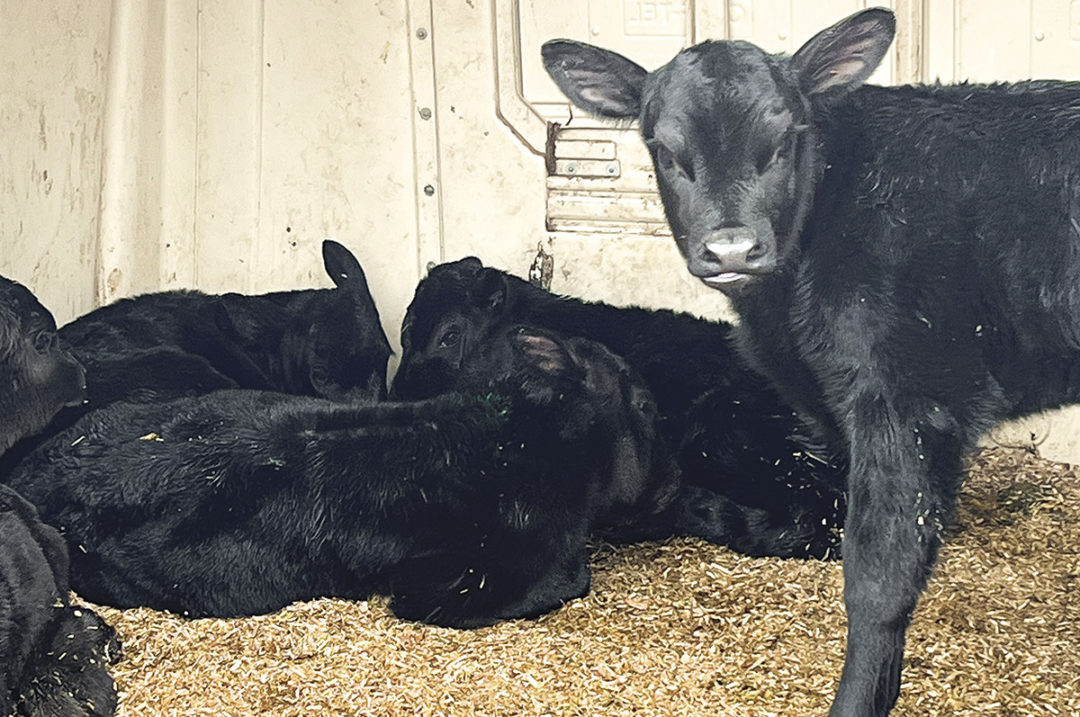Beef embryos have become a revenue generator for dairy farmers investing in beef-on-dairy strategies. Additionally, these calves are adding value to the beef supply chain through more consistent and efficient growth.
Historically, dairy farms have had opportunities to market day-old full beef calves at higher prices than day-old full-blood dairy calves or dairy-beef crossbred calves.
However, current market conditions have altered profit possibilities for full beef calves in a dairy system. Farms may want to consider retained ownership options, especially with new research demonstrating the feed efficiency edge these full beef calves bring. Feed efficiency is always a critical criterion for cattle feeders, meaning it’s worth taking another look at the role of full beef calves and crossbreds originating from dairy systems.
Focus has shifted from short-term returns to taking a longer view of profitability.
For instance, feed efficiency tops the benefits list for strategically utilizing in vitro fertilization (IVF) beef embryos. That’s because higher feed efficiency reduces feeding costs, which is important for farms retaining ownership or marketing calves to feedlots.
Genetics impact performance more than the calf management system
Reproductive management tools can add value to dairy cow pregnancies by creating calves optimized for beef production, but the impacts of the dairy system on beef genetics are not fully known.
New research published in the Journal of Animal Science shows genetics are more impactful on feedlot and carcass performance than the differences in dairy and beef calf management systems.
The trial examined the feedlot performance of straight-bred beef calves raised on a dairy calf ranch to compare finishing growth performance and carcass characteristics to:
- Dairy-beef crossbreds raised on calf ranches
- Straight-bred beef cattle raised in traditional beef cow-calf systems
Beef genetics use on the rise
The use of beef genetics in dairy production is rising in the U.S. because beef genetics consistently improve feeder calf value. Beef semen sales are rising, while dairy semen sales are declining. The use of beef embryos can deliver even more value in the resulting calf, but it was previously unknown how raising beef calves in dairy systems could impact the value of the straight-bred beef calf.
Maternal genetics are a source of variation between dairy-beef crossbred dairy cattle, and few studies have evaluated feedlot and carcass performance of embryo transfer (ET) beef calves and Jersey or Holstein crossbred calves. This study evaluated the impact of Angus, Jersey and Holstein genetics, as well as the effects of the calf management system on the growth and performance of feedlot cattle.
The study included five treatments using steers and heifers in the following combinations:
- Angus bull-commercial beef, raised on the range with their dams
- Angus-commercial beef, gestated by Holstein cows (ET) and raised on a calf ranch
- Angus-commercial beef, gestated by Jersey cows (ET) and raised on a calf ranch
- Angus-Holstein, born to Holstein dams and raised on a calf ranch
- Angus-Jersey, born to Jersey dams and raised on a calf ranch
Do dams or calf-raising systems matter?
It depends.
Feedlot and carcass performance of straight-bred beef cattle were similar regardless of whether the calf was raised in the traditional beef cow-calf system or if the calf was raised at a calf ranch.
Factors such as mating type, development of grazing behavior, housing and exposure to other calves did not affect economically relevant characteristics such as average daily gain, feed intake, hot carcass weight, USDA grade yield or marbling score.
But regardless of dam breed, dairy genetics increased carcass leanness. Based on greater daily live gain and carcass weight, Holstein maternal genetics had greater terminal merit than Jersey maternal genetics.
Results
Minimal differences were detected between the adjusted feed efficiency of beef and dairy-beef crossbred cattle, but underestimation of the mature size of dairy-beef crossbred could have overestimated efficiency.
When adjusted for mature size, dairy-beef crossbred dairy cattle had poorer feed efficiency compared to straight-bred beef cattle. In other words, straight-bred beef cattle had a feed efficiency advantage over dairy-beef cattle.
IVF adds value to dairy systems
In conclusion, beef-cross calves have greater economic value and marketability than straight-dairy calves.
However, using 100% beef genetics through in vitro fertilization and ET can add even more value to the calf thanks to increased feed efficiency – especially when deliberate marketing plans and trusted relationships within the marketing chain are developed and implemented.
The expected benefits of incorporating straight-bred beef embryos include:
- Accelerated genetic gain for milk and beef production
- Premium-quality beef calves
- Offspring produced by genetically superior sires
- Selected for key traits such as Calving Ease, $Beef and Rib-eye Area
It’s worth noting that solid, successful programs are rooted in long-term strategic partnerships and thoughtful planning.




.jpg?t=1687979285&width=640)
.jpg?height=auto&t=1713304395&width=285)


